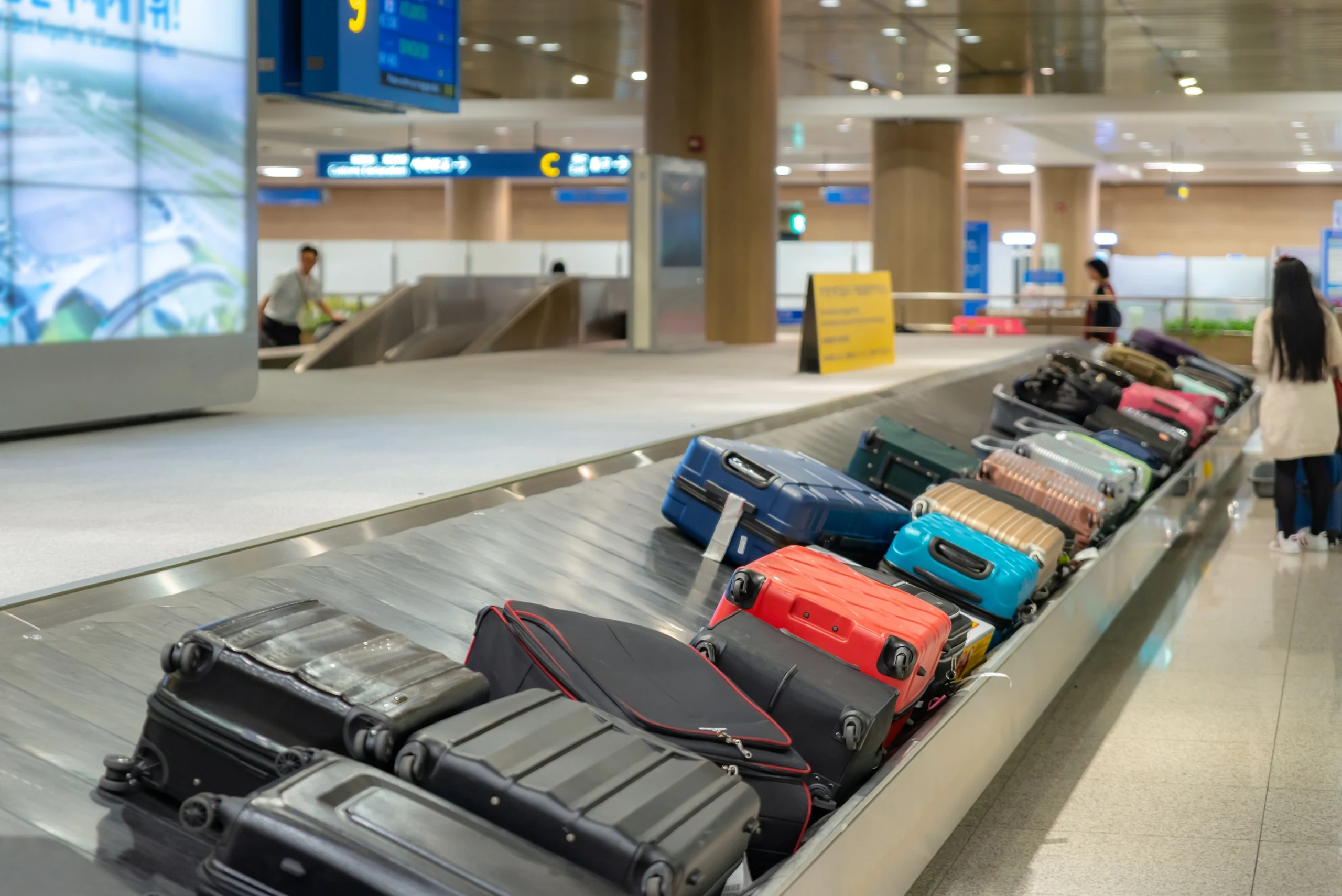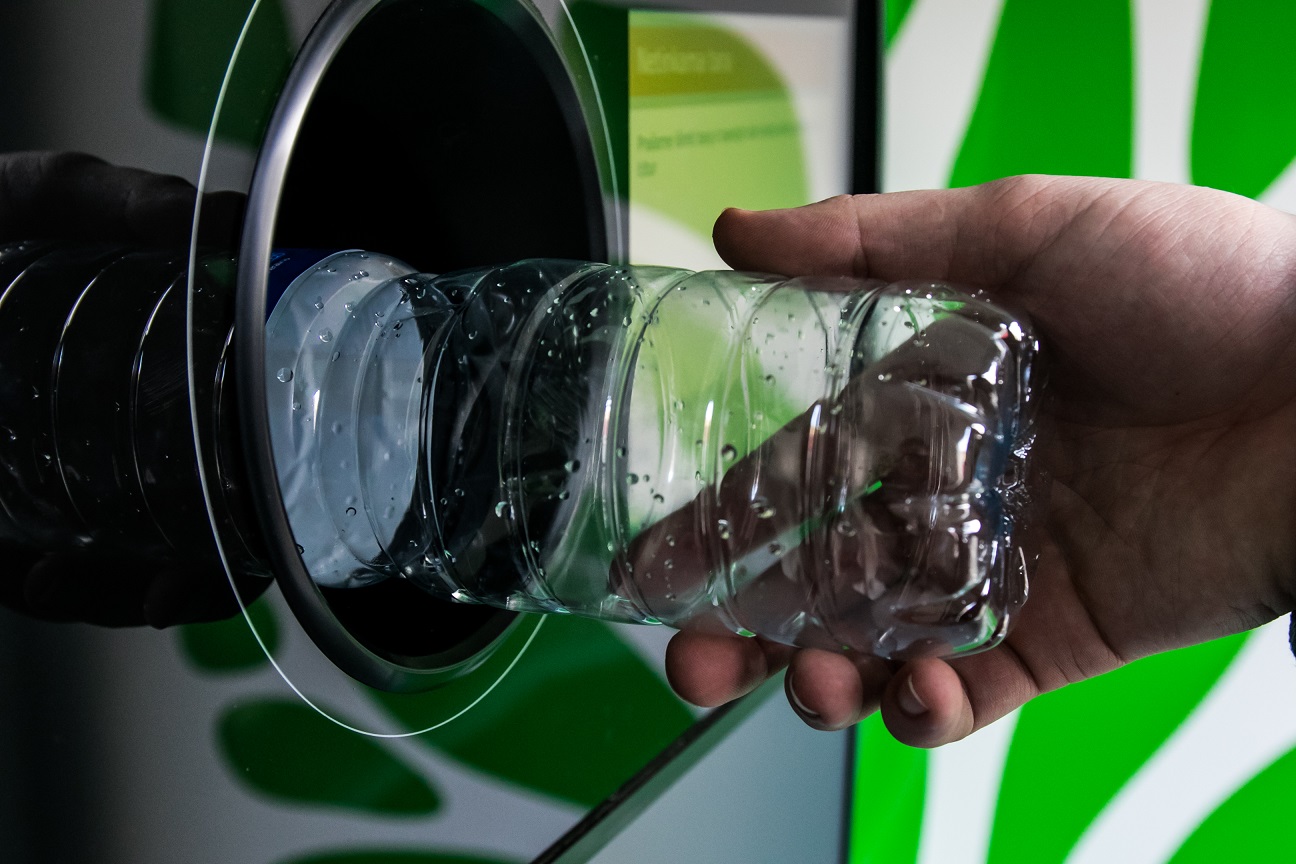Does our luggage fly with us? Logistics at the airport

For people, the matter is simple: check-in (often online, before you even go to the airport), check-in of checked baggage, security check and possibly passport control. But what does it look like for our luggage?
We arrive at the airport with our suitcase, then go to the check-in desk. There, our bag is weighed. This is the moment of truth: have we managed to close within the limit set by the airline or not and will we face a surcharge? Will we pack a few souvenirs on the way back or will we have to fit them in our hand luggage? Then, covered with stickers, our suitcase disappears into a hole in the wall and we get a slip of paper with a barcode confirming it has been checked in.
We go to the control and, in the meantime, our suitcase, bag or backpack begins its journey. A journey that it will undertake with us, although in a completely different place and along different airport roads. A journey that will culminate in a meeting at the destination airport, although sometimes this does not work.
Does our luggage disappear into a black hole?
No, although it might seem that way when, after dispatching, it heads for a hole in the wall and there disappears from our sight. It will travel almost the entire route on conveyor belts. At London Heathrow Airport, the largest airport in Europe, they are almost 20 km long. Heathrow also boasts a 1.2 km-long underground tunnel for baggage only. It connects terminals T3 and T5. Suitcases glide through it at a speed of 700 m/min.
(Note: each airport has its own baggage transport system, more or less elaborate and automated; in this text we describe the general rules).
After disappearing behind the wall, our suitcase will go to the baggage room and security check. It is screened in the same way as hand luggage to make sure it does not contain prohibited items (more on these later). If the inspectors have any doubts, they scan it again, and if this does not dispel them, they call the owner to the baggage checkpoint.
The checked suitcase is on its way. It travels, automatically guided by the system on the basis of the barcode or RFID tag read from the sticker attached to it at check-in (which is why it is a good idea to tear off unnecessary stickers after each journey, so that the system does not accidentally direct our baggage to another aircraft). Finally, it arrives at the sorting area where all the baggage from our flight is collected. There, the ground staff scan them and transfer them to the trolleys in which they will go to the plane.
While passengers are already waiting at their gate to board, the luggage is loaded into the hold. Employees have little time to do this, as the aircraft on the tarmac usually only stands for half an hour, and it still has to be unloaded.
Although time is running out, suitcases and bags must be arranged in the hold according to the crew’s instructions. This is important because pilots calculate the machine’s centre of gravity and take-off weight before every take-off. This is because factors such as fuel consumption and the time it takes to take off and reach the correct altitude depend on it.
Once the aircraft has landed at the destination airport, the next team quickly sets about unpacking the hold. Bags and suitcases are taken to the terminal, put on another conveyor belt and then emerge at the baggage carousel, where passengers are already waiting for them. Well, unless they continue on their way – in which case, instead of being taken to the owner, they are directed to the next plane and set off again on a conveyor belt through the airport, to the plane.
Why does luggage get lost?
What if we are standing at the baggage carousel and our suitcase is still missing? All of them fall out of the opening, finally the last one – and still not ours? We have no choice but to report our lost luggage at the airport and be patient.
As counted by SITA, a company that provides technology solutions for the aviation sector, last year 6.9 pieces of baggage per 1,000 were lost. This is better than in 2022 – then the rate was 7.6. SITA in its report emphasizes that this decline is accompanied by an increase in the number of airline passengers above 2019 levels. In 2023, there were 5.2 billion.
Between 2007 and 2023, the number of lost suitcases decreased by 63 percent, while at the same time the number of travelers increased by 111 percent.
Why do luggage get lost? SITA reports that 42 percent of disappearances occur on transfer flights. Sixteen percent of these cases are each due to not loading them on the plane and a category that includes a ticket error or issues related to security procedures. Nine percent of disappearances are blamed (note, this is also one category) on weather, detention by customs officials or exceeding permitted dimensions or weight.
It is comforting to know that 77 percent of lost suitcases are, however, returned to their owners with a delay. 18 percent is damaged luggage, and only 5 percent. – stolen or actually lost (2019 data).
In 2018, IATA (International Air Transport Association) Resolution 753 came into effect, requiring its member airlines to document the path of baggage from shipment to passenger pickup. A year later, IATA recommended that RFID (Radio-Frequency Identification) technology be implemented to track baggage. What does it consist of? On identification by means of radio waves, that is, contactless and at a distance of a few centimeters to tens of meters. The tag does not have to be visible (unlike a bar code). It is automatically scanned as soon as it comes within range of the reader. So there is no need to stop, properly stack or rearrange the suitcases.
How to minimize the risk of losing luggage?
Even the best technology can fail, so it’s worth taking care of it yourself to reduce the chances of losing your luggage. So what can we do?
- Take only hand luggage, and that is to board the plane. It is known that this is not feasible if we go on a long vacation and have a large suitcase. Very often we travel only with a carry-on, airlines encourage us to send it to the hold (especially if the plane is filled with passengers, it saves space and time). Having a suitcase at hand all the time, we are sure that the carrier will not lose it – we can do it ourselves (unless someone steals it from us).
- If several of the same black suitcases are brought to the carousel upon arrival, it is easy to get confused and take the wrong one. A distinctive shape, color or marking will make sure that neither we get confused nor someone else does.
- It is a good idea to put information with our contact data on the suitcase. In a situation where you lose the barcode sticker, airport staff will know to whom the luggage belongs.
- Before departure, it is also a good idea to take a photo of the open and closed suitcase. It comes in handy when you report to the lost baggage point and need to describe it.
- When packing, tear off all old barcode stickers so they don’t confuse the system.
- Do not ship checked baggage at the last minute.
- When sending it, check the barcode sticker for the correct destination airport (and transit airport if you are traveling with a connecting flight).
- Well store the confirmation of baggage shipment.
- Some airlines have a baggage tracking option in their apps – it’s worth downloading such an app before you travel.
- You can track your own luggage with an item locator (such as Apple AirTag or Galaxy SmartTag). Before you fly, however, it’s worth checking whether airlines allow their use. In 2022, Lufthansa first banned trackers, deeming them unsafe, then changed its mind after consulting with German aviation authorities.
What cannot be sent in my luggage?
The AirTag was controversial because it is a battery-operated device using Bluetooth transmission. According to IATA rules, all electronic devices in checked baggage must be completely switched off. Except that a switched-off tracker ceases to fulfil its function. However, the German aviation authorities considered that, with its low battery and transmission power, it did not pose a safety risk.
There is a long list of items that cannot be carried on an aeroplane, which is why it is worth checking the list on the airline’s website before you travel. Hazardous materials include batteries, aerosols and adhesives, which we use every day without fear, but which may spontaneously start fires through friction or heat generation (e.g. cigarette lighters, safe matches, diving torches), or rapidly stimulate the combustion of other materials through oxidation (bleach).
Explosives (which also include fireworks, sparklers, containers with lighter fuel or alcohol above 70 per cent) and toxic or chemical substances (e.g. tourist gas cylinders) may not be carried. A guide for passengers and a detailed list of prohibited items can also be found on the Civil Aviation Authority’s website.
***
The wrong barcode causes problems not only at the airport. The experts from Łukasiewicz – PIT will help you check that your barcodes are legible and in line with international standards.




